Affiliate disclosure: This post may contain affiliate links. Please see our Privacy Policy.
Gin is a simple botanical flavored alcohol that you can make simply at home.
While commercial gin is distilled with botanicals, it’s easy enough to add them after the fact. Infusing a bit of high-quality vodka with fresh botanicals yields a unique homemade herbal gin with a real taste of home.
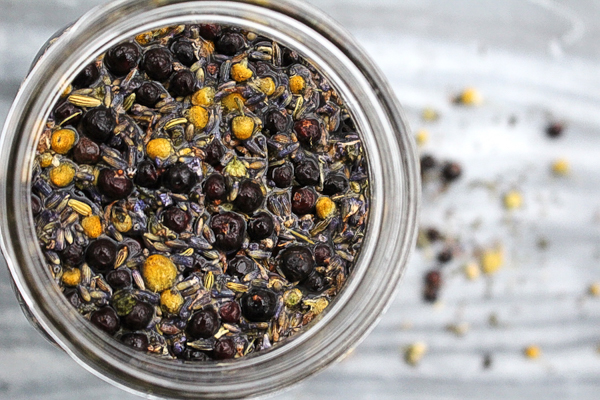
Back when I had an office job, I had this jar of gin labeled “Monday gin.” It started as a joke, we were emptying out liqueur bottles for a craft project and that little mason jar needed a label. My husband, known to label things creatively, wrote “Monday Gin” on a piece of masking tape and stuck it to the jar.
As time wore on I’d find myself looking at that jar of gin and seriously thinking about taking a chug on my way out of the house into work on Monday morning. I know I’m not the only one who’s ever had a soul-sucking job, but for me, that was a real wake-up call. I couldn’t stand the thought of going in and wasting another day in meetings, watching the political show unfold.
I had a good job that paid well, with a lot of responsibility, but that wasn’t the point. All I could think about was how I wanted to live, not make a living, and glancing by that bottle of Monday Gin would remind me of that every time.
It’s been 6 years since I left that job to work for myself and move to our dream homestead off-grid in the woods of Vermont. That little glass jar got packed up in a moving box long ago, and I just ran across it at the back of the pantry. Oh Monday gin, we meet again…this time with a lighter heart.
These days we make and produce so much of what we eat that it gave me an idea. I’d love to make my own batch of homemade gin, full of wild botanicals that we grow and forage here on the homestead. Use it as a way to reshape a memory, and really say goodbye to all those years making a living rather than building a life.
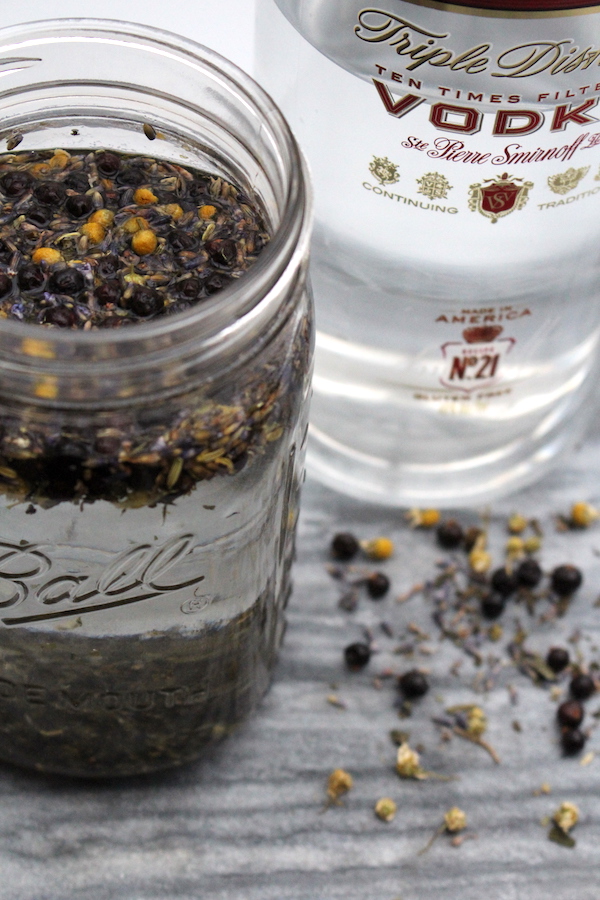
What’s In Gin?
So if you’re going to make a homemade gin infusion, the first step is figuring out what goes into gin. Gin is defined by the US government as “distillation or mixing of spirits with juniper berries and other aromatics or extracts.” To be called gin, a spirit must have juniper berries as the dominant flavor, but beyond that, there’s a lot of options.
According to food republic, once juniper is in the mix, “there are very few limits to the hundreds of ingredients a distillery can use. Some gins have as few as three or four botanical flavors, while the Scottish gin Botanist has 31! The flavors in gin range from cucumber and rose (Hendricks) to lavender (Aviation) to lemongrass and black pepper (Bombay Sapphire East). No two gins are alike…”
Every recipe I can find starts with 2-3 tablespoons of juniper berries infused into 750 ml of vodka. That infusion often takes place first, leaving the juniper to infuse for 12-24 hours before adding other botanicals. The rest of the flavorings are added, and the mixture is left to infuse for an additional 24 to 48 hours before being strained and bottled.
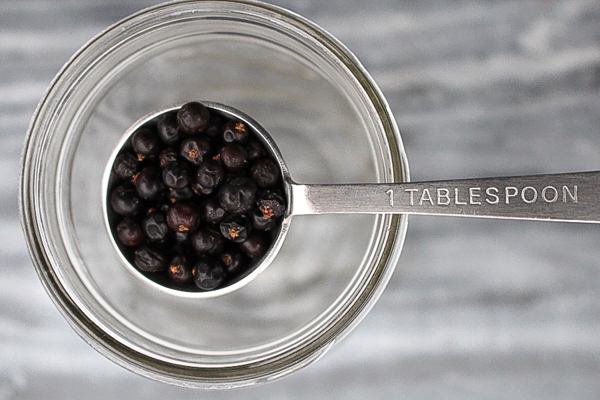
Beyond Juniper, common botanicals ingredients include:
- Coriander Seed
- Black Peppercorns
- Allspice Berries
- Bay Leaves
- Fennel Seed
- Angelica
- Cinnamon
- Citrus Zest
- Edible flowers including lavender rose or chamomile blossoms
My friend Colleen’s recipe for winter-infused gin includes some wild, foraged pine needles and sage. I’m going to infuse my herbal gin in a lighter, floral direction. By incorporating lavender and chamomile flowers I’m hoping to really bring out the botanical notes in this gin.
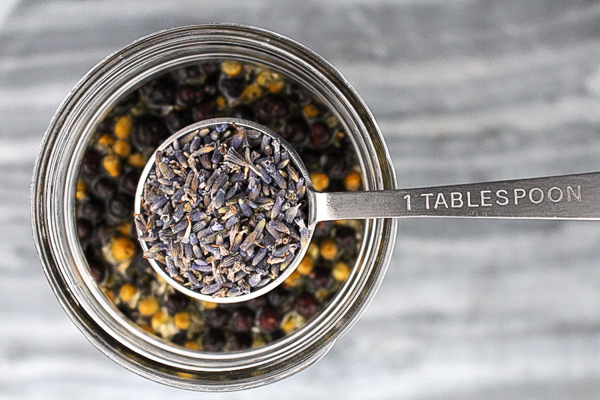
Herbal Gin
While a lot of the common ingredients for gin are found in your spice cabinet, most are a bit tricky to forage in the wild or grow in your home herb garden. Growing juniper is easy enough, but the spicy additions like black pepper and cinnamon are a bit harder to grow at home. Adding spicy homegrown herbs or wild foraged ingredients, like pine needles, sage and rosemary are a good substitute for pepper and cinnamon.
We’ve harvested our own coriander seed, from a cilantro plant that bolted early in the summer heat. Angelica root and fennel seed are easy enough too. Homegrown tulsi from the herb garden will add a bit of warmth and help round out the flavors.
Warmer climates can grow their own citrus, and we’ve had good success growing our own lemon trees indoors here in Vermont. For something a bit wilder, add a bit of wild foraged sumac in place of the citrus.
Sumac will add a hint of tart along with some exotic notes. Not to mention a beautiful red color.
Floral botanicals are where a herbal gin really shines. Think of all the homegrown chamomile, lavender and borage you can add to a gin to make it both delicately flavored and unique.
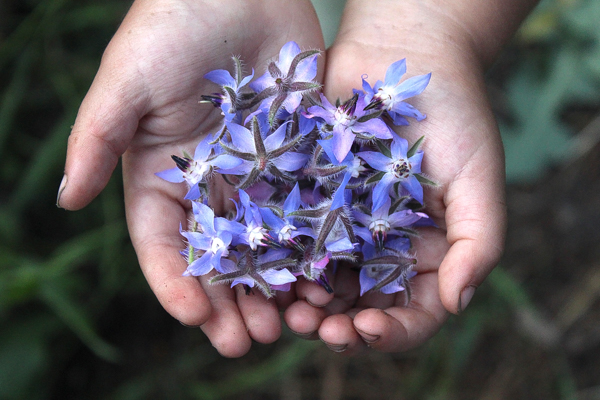
Medicinal Uses of Gin
If you’re going to go through all the effort of making a herbal gin, it might as well be a medicinal herbal gin. While my “Monday Gin” was a medicine of a sort, gin has a long tradition of being used medicinally. Or, practically speaking, gin was mixed with other medicines to get reluctant patients to take their medicine.
Gin and tonic is just another way to get people to agree to a steady dose of quinine as an antimalarial tonic. Gin’s association with lime dates back to when sailors were given gin with lime to help combat scurvy.
Since gin is made with herbal botanicals, there’s absolutely no reason why those botanicals can’t be chosen with a medicinal motive in mind.

Juniper itself is medicinal, and according to WebMD it’s used for “upset stomach, flatulence, heartburn, bloating…as well as gastrointestinal infections and worms.” Since the dominant flavor of gin is already taking us in a digestive direction, I’m going to target my herbal gin blend to help that along a bit and make it into a soothing after-dinner drink.
I’ll stay away from digestive bitters because I already have herbal bitters on my shelf made from dandelion and burdock. For this homemade herbal gin, I’m going for something light, floral and pleasantly botanical. Since it’s mid-winter, this batch will be all dried herbs, but I’ll try another fresh herb batch with edible flowers in the summertime.
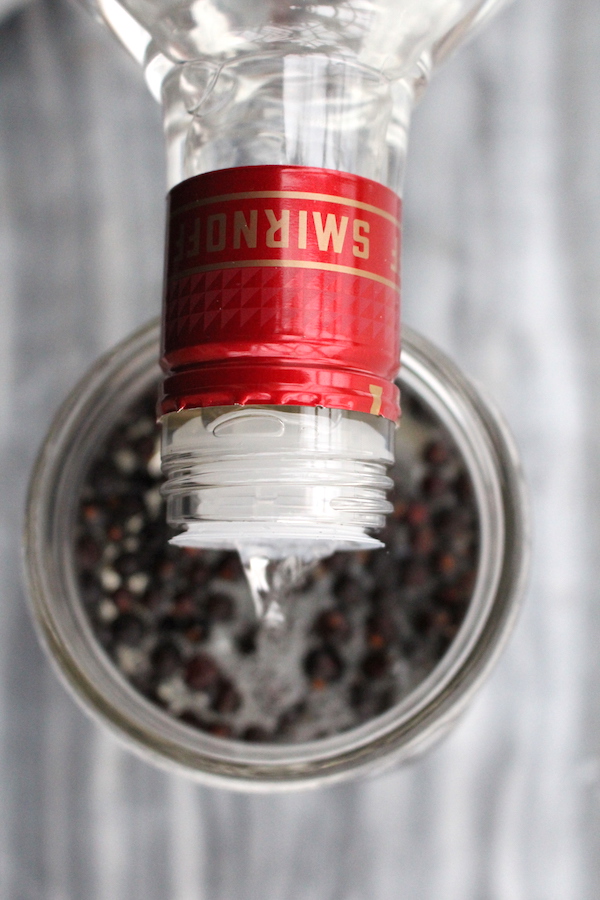
Regardless of the herbs you choose, start with a smooth neutral vodka. While you can make a herbal-infused gin using the cheapest bottom-shelf vodka, all the harsh notes will come through and spoil your botanical gin.
No need to go crazy expensive, but something mid-shelf like Smirnoff is a good choice.
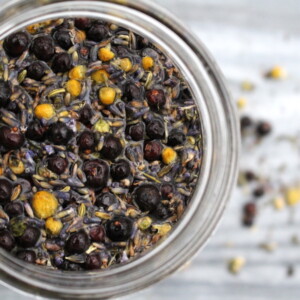
Herbal Gin
Ingredients
- 750 ml vodka
- 2 tbsp juniper berries, dried
- 1 tbsp lemon balm, dried
- 1 tbsp tulsi, holy basil
- 1 tbsp lavender flowers, dried
- 1 tbsp chamomile flowers, dried
- 1 tsp coriander seed, whole dried
- 1 tsp fennel seed, whole dried
- 1 tsp citrus zest, lemon, orange or lime
Instructions
- In a quart mason jar, mix vodka and juniper berries and allow to infuse for 24 hours.
- After 24 hours, add in the remaining herbal ingredients and infuse for another 24 to 48 hours.
- Strain and enjoy your homemade herbal gin.
Nutrition
Nutrition information is automatically calculated, so should only be used as an approximation.

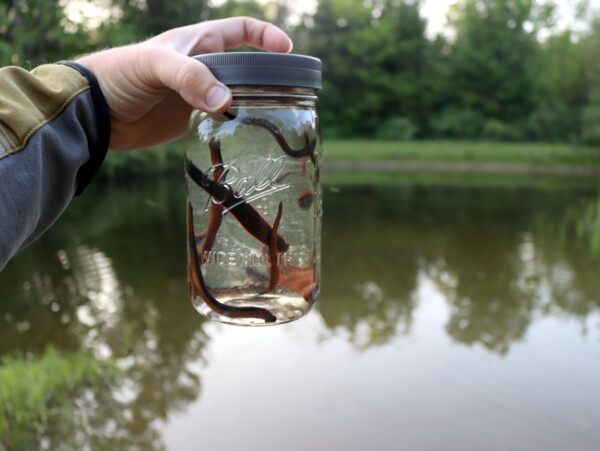
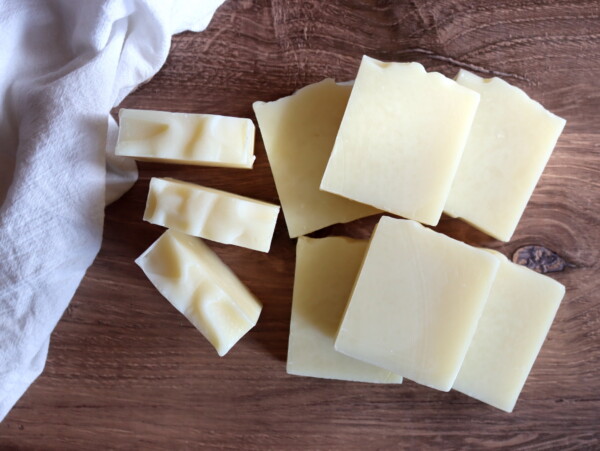
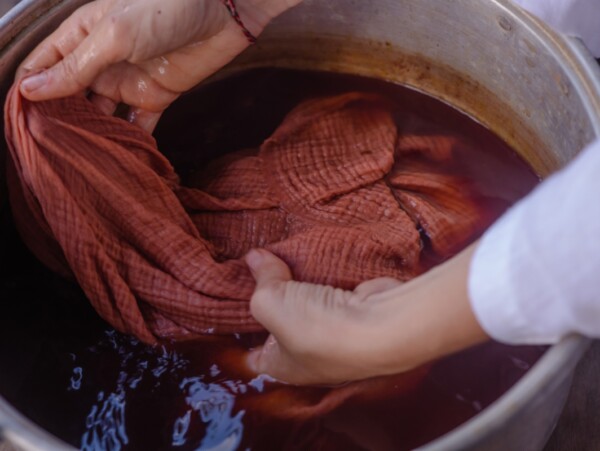
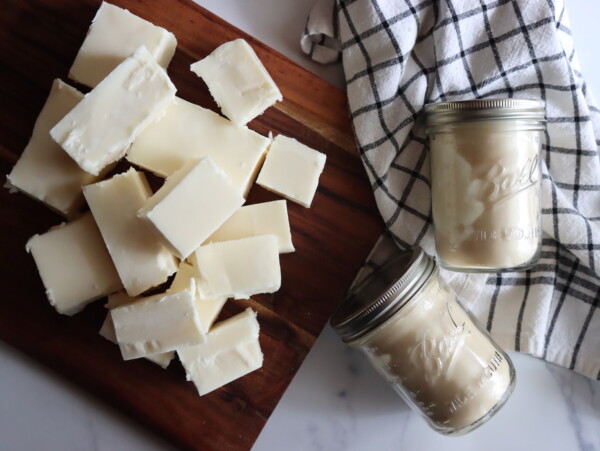
Here’s a great article from Grow Forage Cook Ferment on foraging for wild juniper berries. https://www.growforagecookferment.com/foraging-for-juniper-berries/
So, by this article, gin is not an alcohol unto itself, but rather simply flavored vodka???
Interesting.
I tincture the herbs desired in vodka….organic NC vodka (or grain alcohol) I age these from picking in old time moon charts, and sample them after 6 months without a schedule. Current tinctures include Buck rose hips, comfrey, yarrow (ongoing), plantain, and reisha. These I augment with shiitake propagation, foraging for maitake, lions mane, oyster, reisha, chantrells, and “puffballs”.